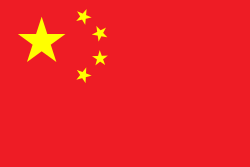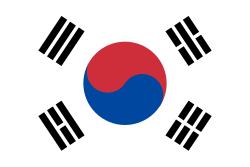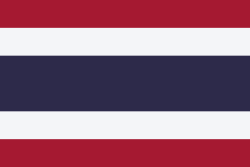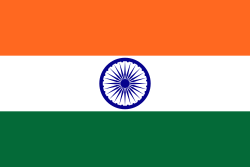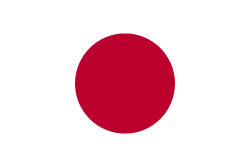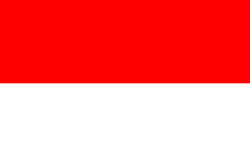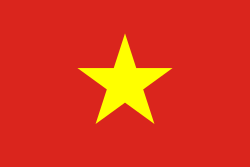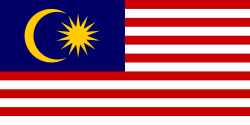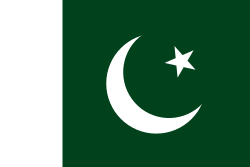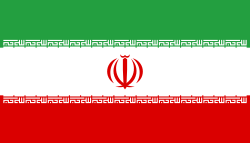Asienspiele 2014/Badminton (Dameneinzel)
Titelträger im Badminton wurden bei den Asienspielen 2014 in Incheon in Südkorea in fünf Einzel- und zwei Mannschaftsdisziplinen ermittelt. Folgend die Ergebnisse im Dameneinzel. Die Wettkämpfe fanden vom 24. bis zum 28. September 2014 statt.
Zeitplan
| Datum | Zeit | Runde |
|---|---|---|
| Mittwoch, 24. September 2014 | 09:00 | 1. Runde |
| Donnerstag, 25. September 2014 | 09:00 | Achtelfinale |
| Freitag, 26. September 2014 | 13:00 | Viertelfinale |
| Sonnabend, 27. September 2014 | 10:30 | Halbfinale |
| Sonntag, 28. September 2014 | 14:30 | Finale |
Setzliste
 Li Xuerui (Finalist)
Li Xuerui (Finalist) Wang Yihan (Champion)
Wang Yihan (Champion) Sung Ji-hyun (Viertelfinale)
Sung Ji-hyun (Viertelfinale) Ratchanok Intanon (Viertelfinale)
Ratchanok Intanon (Viertelfinale) Bae Yeon-ju (Halbfinale)
Bae Yeon-ju (Halbfinale) Saina Nehwal (Viertelfinale)
Saina Nehwal (Viertelfinale) Tai Tzu-ying (Halbfinale)
Tai Tzu-ying (Halbfinale) P. V. Sindhu (Achtelfinale)
P. V. Sindhu (Achtelfinale) Nitchaon Jindapol (Achtelfinale)
Nitchaon Jindapol (Achtelfinale) Sayaka Takahashi (1. Runde)
Sayaka Takahashi (1. Runde)
Resultate
Finale
| Finale | |||||
| 1 | 21 | 17 | 7 | ||
| 2 | 11 | 21 | 21 | ||
Obere Hälfte
| 1. Runde | Achtelfinale | Viertelfinale | Halbfinale | |||||||||||||||||||||||
| 1 | 21 | 21 | ||||||||||||||||||||||||
| 21 | 21 | 13 | 15 | |||||||||||||||||||||||
| 1 | 5 | 1 | 21 | 21 | ||||||||||||||||||||||
| 8 | 21 | 21 | 9 | 19 | ||||||||||||||||||||||
| 7 | 13 | 8 | 22 | 16 | 20 | |||||||||||||||||||||
| 21 | 21 | 20 | 21 | 22 | ||||||||||||||||||||||
| 5 | 17 | 1 | 21 | 24 | 21 | |||||||||||||||||||||
| 3 | 21 | 21 | 7 | 16 | 26 | 8 | ||||||||||||||||||||
| 12 | 12 | 3 | 21 | 21 | ||||||||||||||||||||||
| w/o | 16 | 13 | ||||||||||||||||||||||||
| 3 | 14 | 21 | 17 | |||||||||||||||||||||||
| 7 | 21 | 21 | 21 | 7 | 21 | 19 | 21 | |||||||||||||||||||
| 10 | 23 | 11 | 15 | 7 | 21 | 21 | ||||||||||||||||||||
| 2 | 9 | 9 | 19 | 6 | ||||||||||||||||||||||
| 9 | 21 | 21 | ||||||||||||||||||||||||
Untere Hälfte
| 1. Runde | Achtelfinale | Viertelfinale | Halbfinale | |||||||||||||||||||||||
| 14 | 16 | |||||||||||||||||||||||||
| 21 | 21 | 21 | 18 | 15 | ||||||||||||||||||||||
| 19 | 12 | 5 | 18 | 21 | 21 | |||||||||||||||||||||
| 5 | 21 | 21 | 5 | 21 | 18 | 21 | ||||||||||||||||||||
| 16 | 15 | 4 | 4 | 21 | 8 | |||||||||||||||||||||
| 21 | 21 | 9 | 5 | |||||||||||||||||||||||
| 12 | 17 | 4 | 21 | 21 | ||||||||||||||||||||||
| 4 | 21 | 21 | 5 | 10 | 21 | 16 | ||||||||||||||||||||
| 3 | 5 | 2 | 21 | 12 | 21 | |||||||||||||||||||||
| 21 | 21 | 7 | 6 | |||||||||||||||||||||||
| 10 | 8 | 6 | 21 | 21 | ||||||||||||||||||||||
| 6 | 21 | 21 | 6 | 21 | 9 | 7 | ||||||||||||||||||||
| 21 | 21 | 2 | 18 | 21 | 21 | |||||||||||||||||||||
| 10 | 12 | 7 | 9 | |||||||||||||||||||||||
| 16 | 16 | 2 | 21 | 21 | ||||||||||||||||||||||
| 2 | 21 | 21 | ||||||||||||||||||||||||
Weblinks
Auf dieser Seite verwendete Medien
Chinese Taipei Olympic Flag. According to the official website of Chinese Taipei Olympic Committee, Blue Sky(circle) & White Sun(triangles) above the Olympic rings is neither the National Emblem of the Republic of China, nor the Party Emblem of Kuomintang (KMT), but a design in between, where the triangles do not extend to the edge of the blue circle, as registered at International Olympic Committee in 1981 and digitally rendered in 2013. Besides, the blue outline of the five-petaled plum blossom is broader than the red one. Moreover, the CMYK code of the blue one and the Blue Sky & White Sun is "C100-M100-Y0-K0", and different from the Olympic rings (C100-M25-Y0-K0). Note that it's the only version recognized by IOC.
Chinese Taipei Olympic Flag. According to the official website of Chinese Taipei Olympic Committee, Blue Sky(circle) & White Sun(triangles) above the Olympic rings is neither the National Emblem of the Republic of China, nor the Party Emblem of Kuomintang (KMT), but a design in between, where the triangles do not extend to the edge of the blue circle, as registered at International Olympic Committee in 1981 and digitally rendered in 2013. Besides, the blue outline of the five-petaled plum blossom is broader than the red one. Moreover, the CMYK code of the blue one and the Blue Sky & White Sun is "C100-M100-Y0-K0", and different from the Olympic rings (C100-M25-Y0-K0). Note that it's the only version recognized by IOC.
bendera Indonesia
Die Flagge von Nepal mit rechtem Rand (Seitenverhältnis 3:4)
Die Flagge von Nepal mit rechtem Rand (Seitenverhältnis 3:4)
Flagge des Irans. Die dreifarbige Flagge wurde 1906 eingeführt, aber nach der Islamischen Revolution von 1979 wurden die Arabische Wörter 'Allahu akbar' ('Gott ist groß'), in der Kufischen Schrift vom Koran geschrieben und 22-mal wiederholt, in den roten und grünen Streifen eingefügt, so daß sie an den zentralen weißen Streifen grenzen.
Logo of Olympic Council of Asia
Flagge der Malediven.

